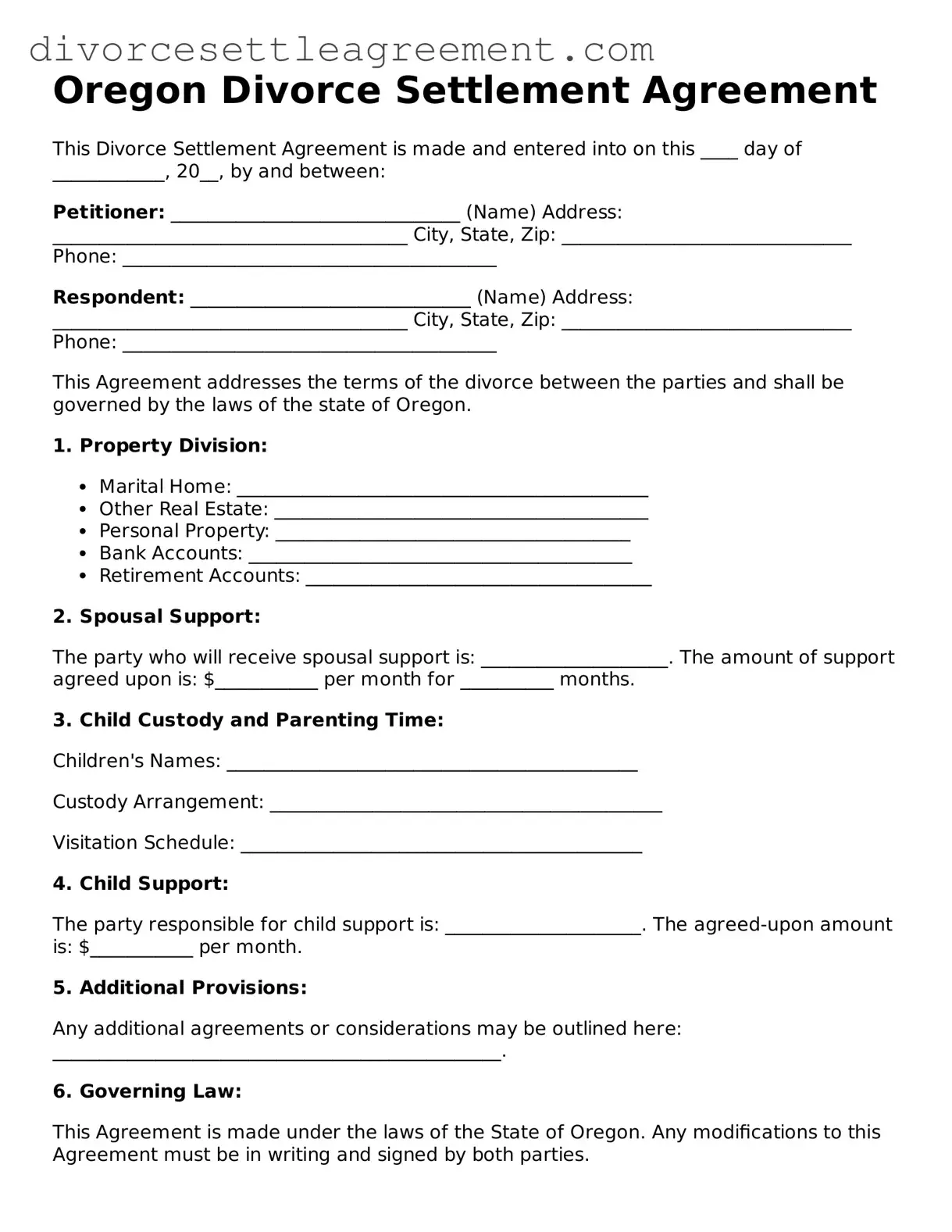What is a Divorce Settlement Agreement in Oregon?
A Divorce Settlement Agreement is a legal document that outlines how a couple will divide their assets, debts, and responsibilities after a divorce. It serves as a mutual agreement between both parties, detailing arrangements regarding property division, child custody, and support obligations. This agreement is crucial for ensuring that both parties understand their rights and obligations moving forward.
Why is a Divorce Settlement Agreement important?
This agreement is important because it helps to prevent future disputes. By clearly laying out the terms of the divorce, both parties can avoid misunderstandings and conflicts down the line. Additionally, having a formalized agreement can expedite the divorce process, making it smoother and less stressful for everyone involved.
What should be included in the Divorce Settlement Agreement?
Typically, a Divorce Settlement Agreement should include details about the division of marital property, allocation of debts, child custody arrangements, visitation rights, and child or spousal support. It’s essential to address all relevant issues to ensure that nothing is overlooked, which could lead to complications later.
Do I need a lawyer to create a Divorce Settlement Agreement?
While it is not legally required to have a lawyer draft your Divorce Settlement Agreement, it is highly advisable. A lawyer can help ensure that the agreement complies with Oregon laws and that your rights are protected. They can also provide valuable guidance on what to include and help negotiate terms that are fair to both parties.
Can the Divorce Settlement Agreement be modified after it is signed?
Yes, a Divorce Settlement Agreement can be modified after it is signed, but only under certain circumstances. For example, if there is a significant change in circumstances, such as a job loss or a change in income, either party may request a modification. However, any changes must be agreed upon by both parties and may need to be approved by the court.
How do I file the Divorce Settlement Agreement with the court?
To file the Divorce Settlement Agreement with the court, you will need to submit it along with your divorce petition. The court will review the agreement to ensure it is fair and complies with state laws. Once approved, the agreement becomes part of the final divorce decree, making it enforceable by law.
What happens if my spouse and I cannot agree on the terms?
If you and your spouse cannot agree on the terms of the Divorce Settlement Agreement, you may need to consider mediation or negotiation. A neutral third party can help facilitate discussions and work toward a compromise. If mediation fails, the case may go to court, where a judge will make the final decisions regarding the terms of the divorce.
Is the Divorce Settlement Agreement legally binding?
Yes, once signed by both parties and approved by the court, the Divorce Settlement Agreement is legally binding. This means that both parties are obligated to adhere to its terms. Failing to comply can result in legal consequences, so it’s essential to take the agreement seriously and fulfill your obligations.
How long does it take to finalize a Divorce Settlement Agreement?
The time it takes to finalize a Divorce Settlement Agreement can vary widely. If both parties can agree on terms quickly, it may take just a few weeks. However, if there are disputes or complex issues to resolve, it could take several months. Being organized and willing to negotiate can help speed up the process.
Where can I find a Divorce Settlement Agreement form in Oregon?
You can find a Divorce Settlement Agreement form through various sources, including the Oregon Judicial Department's website, local courthouses, or legal aid organizations. Many resources provide templates that can be customized to fit your specific situation. It's important to ensure that any form you use complies with Oregon law.
